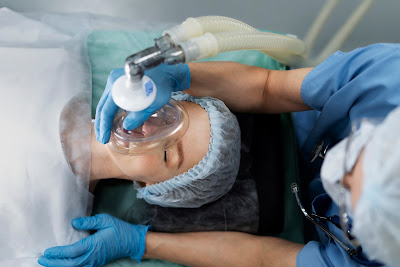Mastering the Complex Maze: Navigating Type 2 Diabetes with Medvantage's Advanced Certification
Type 2 Diabetes Mellitus (T2DM) stands as a formidable challenge in the realm of healthcare, marked by its intricate pathophysiology and the far-reaching implications it holds for affected individuals. The Advanced Certificate in Diabetes Mellitus, offered by Medvantage, serves as a beacon of knowledge, equipping healthcare professionals with in-depth insights into T2DM. This article explores the program's focus on pathophysiology, clinical manifestations, diagnostic criteria, and evidence-based management strategies.
Pathophysiology of T2DM in Advanced Certificate in Diabetes Mellitus1.Insulin Resistance: The foundation of T2DM lies in peripheral insulin resistance, where vital tissues—skeletal muscle, adipose tissue, and the liver—show diminished responsiveness to insulin. This disruption hampers glucose uptake and utilization, forming a key focus in the program's curriculum.
2.Beta-Cell Dysfunction: A progressive decline in pancreatic beta-cell function exacerbates hyperglycemia. Genetic factors, chronic inflammation, and metabolic stress contribute to the deterioration of insulin-secreting beta cells.
3.Adipose Tissue Dysregulation: Obesity-induced dysfunction in adipose tissue triggers an inflammatory milieu, releasing adipokines and free fatty acids. These factors intricately contribute to insulin resistance and disrupted glucose homeostasis, an aspect thoroughly explored in the advanced curriculum.
Clinical Manifestations:1.Polyuria, Polydipsia, Polyphagia: The classical symptoms of T2DM find their roots in hyperglycemia-induced osmotic diuresis. It delves into the intricacies of fluid loss, increased thirst, and excessive hunger as cardinal signs demanding clinical attention.
2.Fatigue and Malaise: The program underscores the link between inefficient glucose utilization and persistent fatigue, recognizing the clinical relevance of energy metabolism in T2DM.
3. Microvascular and Macrovascular Complications: The comprehensive care required for individuals with T2DM, shedding light on the microvascular complications (retinopathy, nephropathy, neuropathy) and macrovascular complications (cardiovascular disease) resulting from chronic hyperglycemia.
Diagnostic Criteria:1.Fasting Plasma Glucose and Oral Glucose Tolerance Test: The Course emphasizes the importance of precise diagnostic criteria, including elevated fasting plasma glucose levels and abnormal oral glucose tolerance tests.
2.Hemoglobin A1c (HbA1c): With a focus on long-term glycemic control, the program recognizes HbA1c levels as pivotal diagnostic and monitoring tools in T2DM.
Management in Advanced Certificate in Diabetes Mellitus:1.Lifestyle Modification: The role of lifestyle interventions—regular physical activity, weight management, and a balanced diet—as fundamental pillars in T2DM management, addressing both insulin resistance and beta-cell dysfunction.
2.Oral Antidiabetic Medications: The curriculum covers a spectrum of pharmacotherapy options, including metformin, sulfonylureas, thiazolidinediones, and dipeptidyl peptidase-4 (DPP-4) inhibitors, each targeting specific aspects of T2DM pathophysiology.
3.Injectable Therapies: In advanced cases, the program explores the necessity of insulin therapy or glucagon-like peptide-1 (GLP-1) receptor agonists to optimize glycemic control.
4.Patient Education and Continuous Monitoring: Medvantage underscores the pivotal role of patient empowerment through education on self-monitoring, medication adherence, and lifestyle management for long-term success.
Conclusion:The Advanced Certificate in Diabetes Mellitus provided by Medvantage represents a milestone in advancing expertise in T2DM. Through a multifocal approach and a deep understanding of pathophysiology, the program lays the foundation for evidence-based clinical practice. As research progresses, the personalized care plans and tailored therapeutic strategies fostered by the course provides hope for improved outcomes and an enhanced quality of life for individuals navigating the complexities of T2DM.




Comments
Post a Comment